|
| |
|
STORY PLACEMENT THIS STORY TAKES PLACE BETWEEN THE TV STORY "SPEARHEAD FROM SPACE" AND THE
BIG FINISH AUDIO BOOK
PRODUCTION CODE BBB
WRITTEN BY MALCOLM HULKE
DIRECTED BY TIMOTHY COMBE
RATINGS 7.7 MILLION
WORKING TITLE THE MONSTERS
RECOMMENDED PURCHASE 'BENEATH THE SURFACE' DVD BOX SET (BBCDVD 2438) RELEASED IN JANUARY 2008.
BLURB
EXILED TO EARTH AND
|
|
|
Doctor Who and the Silurians 31ST JANUARY 1970 - 14TH MARCH 1970 (7 EPISODES)
Despite the well-documented problems encountered during its production, Doctor Who’s seventh season was broadcast to a welcome reception from both critics and viewers. One of that year’s best-remembered stories is the seven-part epic “Doctor Who and the Silurians” by Malcolm Hulke, released on DVD as part of 2 Entertain’s sumptuous “Beneath The Surface” box set.
With two discs to play around with, the Restoration Team have complemented the box set’s flagship story with a plethora of impressive extras. Indeed, “Doctor Who and the Silurians” contains not one but two full-length documentaries – “What Lies Beneath” and “Going Underground”.
Above: Acclaimed new series scribe and novelist Paul Cornell in the "What Lies Beneath" documentary
The former is an incredibly polished production, quite easily worthy of television broadcast. Geoffrey Palmer, who fans of the new series may recognise from his portrayal of the Titanic’s tortured Captain in the recent “Voyage of the Damned” Christmas Special, narrates this captivating documentary which explores not only the impact that such a morally-charged story had on its contemporary viewers but also the socio-political climate that spawned it in the first place. I like the way in which “What Lies Beneath” does not shy away from making comparisons with the new series; the documentary actually goes so far as to open with clips from episodes like “Utopia” and “World War Three”. I have criticised the Restoration Team’s documentaries in the past for restricting themselves to the classic series, but I am pleased to say that within the last six months or so they have not only acknowledged the new series on their DVDs but also the Big Finish audios. Big thumbs up!
“Going Underground”, on the other hand, is a much more conventional ‘making of’ documentary. It took me a while to find as it is billed in the DVD’s liner notes as being on disc 1 when it is in fact on disc 2, but once I had found it I was not disappointed. Nicholas Courtney, Barry Letts, Terrance Dicks, and company must be making a living out of doing these things at present, but they are certainly worth whatever they cost. This documentary is littered with ancedotes that I was not familiar with before, such as how Peter Miles really went bezerk when he went bezerk or how the real life owner of the ‘Who 1’ numberplate wrote Letts a rather stern letter about the series’ flagrant theft of his numberplate.
The rest of the special features are less extensive, but welcome all the same. Whilst I am not really fascinated by the music or where the serial was filmed, I was quite enthralled by the five-minute “Colour Silurian Overlay” featurette which explains in layman’s terms how the serial was recolourised.
The commentary, though crowded, is also rather enlightening. Learning that old ‘Mac’ Hulke was once a communist really surprised me as his work has never really screamed out ‘communist’ at me. Liberal, certainly, but not communist. Still, that particular revelation was not quite as shocking as Caroline John’s unashamed plugging of “the Cave Monsters” audio book which she narrates, although I did at least learn a lot about the character’s motivations and back stories which are fleshed out in the novelisation from her. Of all the special features though, I have to say that it was the ever-popular production subtitles that impressed me the most – farting Silurians indeed!
As most fans will be aware, the seven-part serial itself tells of a race of Reptile Men that evolved on the Earth before man. Believing that the Earth was about to meet with a global catastrophe, these ‘Silurians’ put themselves into hibernation until such a time as the Earth would be inhabitable for them once more. Of course, the catastrophe never came and so they never woke up. Until now.
Arguably this serial’s greatest strength is the fascinating plot. “Doctor Who and the Silurians” is not a story about aliens invading the Earth; it is a story about the Doctor – an alien to this world – discovering an ancient race and trying to make peace between them and their planet’s current inhabitants. The Silurians are not evil; nor are the humans. Nor is Lawrence. Or Quinn. Or Masters. Or the Brigadier, for that matter. They are all impossible people in impossible positions, doing what they feel is right. This story of the Doctor and the Cave Monsters is a bona fide, modern day tragedy.
LIZ So you’re a member of UNIT?
THE DOCTOR Depressing isn’t it.
The moral centre of this story is reflected wonderfully within the Doctor / Brigadier relationship. At the beginning of the story, despite his unmistakable exile-induced depression, the Doctor is actually quite chummy with the Brigadier. Even this early on in the friendship there is perceptibly a deep respect and a great fondness, yet at the end of this story the Brigadier betrays the Doctor. He plans it. He sends the Doctor off out of the way and bombs the entrances to the Silurian caves, doubtlessly killing many of their number. To the Doctor, such action is murder – plain and simple. To the Brigadier, it is following orders. It is to Hulke’s credit that he wrote a script courageous enough not only to see the Doctor lose, but to see him lose to his best friend.
There are lots of other
elements that endeared this serial to me – Liz’s legs, Peter Miles’
Of course, like most classic serials this one has its flaws - the main one being its pace. The serial’s extraordinary length, a cost-saving measure brought in by the outgoing production team, heavily burdens Hulke’s storyline. For example, it is not until the end of the third episode that the eponymous Silurians are finally revealed to the audience – almost half way through the entire story. Episode six also stands out as being particularly slow – the whole ‘disease’ angle could have quite easily been dropped without significantly detracting from the story. Somewhat predictably, the ‘poor’ science behind the Silurians / Eocenes / Reptile Men is also highly criticised by the bored and the pedantic (says I), but to those people I would say have a look at the opening chapters of Gary Russell’s wonderful Missing Adventure novel, “The Scales of Injustice”. That’ll learn yer.
On the whole, it is hard not to like “Doctor Who and the Silurians”. Paul Cornell sums up the power of this story better than I ever could - “it is not even a metaphor. It is just true”. And he is right. Immigration. Colonialism. Racism. Détente. All these potent issues are embedded in the very fabric of this story, and Hulke has not even bothered to mask them in allegory. Genius.
However, this seven-parter will inevitably be compared to the much faster and flashier sequel, “The Sea Devils”, which would follow in 1972, but one should remember that this was the first story to introduce us to the incredible idea that there may be another race living on Earth that pre-dates man, and for that bold move alone it should be applauded.
This serial also brings with it the Doctor’s famous yellow roadster Bessie (albeit with an inexcusable, mystique-destroying numberplate) as well as a new producer (eventually!) in Barry Letts. In a lot of ways, this serial marks the true beginning of the Pertwee Years. After
a success like this one,
the series once uncertain eighth season became unavoidable.
|
|
|
Copyright © E.G. Wolverson 2008
E.G. Wolverson has asserted his right under the Copyright, Designs and Patents Act, 1988 to be identified as the author of this work. |
|
|
Doctor Who and the Cave Monsters
Following the successful return of the Silurians in the latest two-part story, The Hungry Earth / Cold Blood, I decided that it was time to look back at where the reptile people’s story began. Not the Pertwee-starring serial, Doctor Who and the Silurians, but the true vision of their creator, the great Malcolm Hulke. Thankfully, the audio reading of his classic novelisation of the serial, Doctor Who and the Cave Monsters, is readily available from BBC Audio, and it is this that shows best his original concept for the Earth’s aboriginal civilisation.
with the most ‘Target-y’ sounding name should have been re-titled, even in the early days of the range when such renaming was commonplace. There’s a very good reason for it, though. The reptilian cave-dwellers of the story are simply not called Silurians, and at no point in Hulke’s novelisation (save the original edition’s back cover blurb) are they named as such. Instead, they are reptile men and women. Perhaps it’s stranger that the book wasn’t titled Doctor Who and the Reptile People, although this probably doesn’t sound as cool as The Cave Monsters.
In any case, it’s in the presentation of the cave monsters that the novel differs most markedly from the original serial, showing Hulke’s intent to make them into a fully-fledged, believable society, rather than another bunch of run-of-the- mill monsters. Opening with a very evocative picture of the reptile’s final days as rulers of the Earth, as the rogue planet that would become the Moon encroaches upon them, the novel- isation continues throughout to paint the reptile people with sympathy and skill. Here, each of the principle reptilian characters has a name. The ‘young Silurian’ becomes Morka, the ‘old Silurian’ is Okdel, and the ‘Silurian scientist’ is revealed to be named K’to. The personality of each is developed well beyond what made it to the screen (which was complex characterisation for an alien race in the series at the time in any case). This is most evident in the eighth chapter, Into an Alien World, which is deftly written from Morka’s point of view, with the Doctor and Brigadier described by their most obvious features (“Frock Coat” and “Fur-Under-Nose!”)
Hulke doesn’t merely provide his reptilian characters with great levels of characterisation, though - all the human characters are excellently written, becoming fully-rounded individuals. Even less noble characters, such as the militaristic Major Barker and the avaricious Quinn, are portrayed sympathetically and with understandable motivations. Particularly of note is the complex relationship between Quinn and Miss Dawson, explored here with a subtlety and maturity that rarely makes it into Doctor Who even now.
Not to say that the denser passages of this approach weigh the work down; it moves along with a fine pace that the occasionally plodding serial failed to manage. The only sequence in which the television version trumps the novelisation is that of Masters’ unwitting spread of the virus through London, which here lacks the genuinely unsettling realism that marked out the equivalent scenes on television.
for audio, and BBC Audio doesn’t disappoint. This is as brilliantly done as all their best readings. Caroline John’s narration is excellent - each is character brought to life with subtly distinct voices and deliveries, working alongside Hulke’s characterisation to great effect. Only the Brigadier sounds as though he’s beyond her ability, but even the very plumy tones she produces here soon grew on me and became part of the whole picture. The usual fine work with electronic modulation reproduces the reptile men’s distinctive voices, and subtle musical cues help break up the story. Even the packaging has been created with great care, with small reproductions of illustrations and alternative covers on display, even if they are, as on other releases, rather small. I love seeing the liberties taken on foreign editions of the books, and the Japanese concept of a ‘Silurian’ is a thing of beauty. On the whole, though, it’s the Finnish version, with its endearingly rubbish dinosaurs, that’s my favourite.
These audio readings are a fine way for those fans who are, like me, too young to have really experienced the Target phenomenon, to enjoy a bit of Doctor Who history, and to experience classic serials in new and interesting ways. If you’re looking for a release to
start your Target trawl, or you’re simply after a fine science fiction
story, then The Cave Monsters is undoubtedly an excellent choice.
|
|
|
Copyright © Daniel Tessier 2010
Daniel Tessier has asserted his right under the Copyright, Designs and Patents Act, 1988 to be identified as the author of this work. |
|
|
Unless otherwise stated, all images on this site are copyrighted to the BBC and are used solely for promotional purposes. ‘Doctor Who’ is copyright © by the BBC. No copyright infringement is intended. |
|

.jpg)
.jpg)
.jpg)
.jpg)
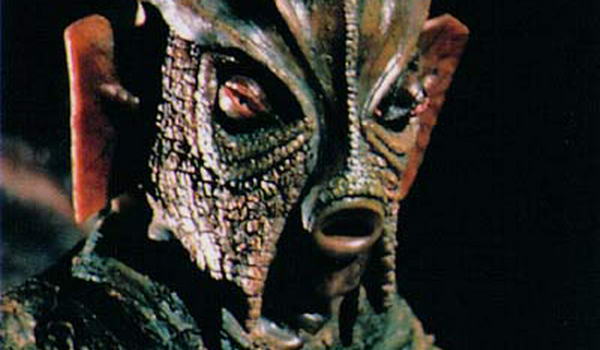
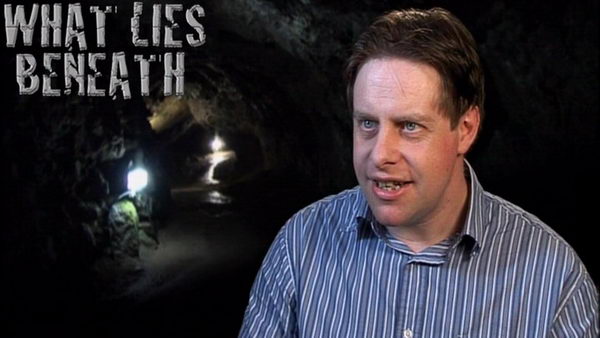
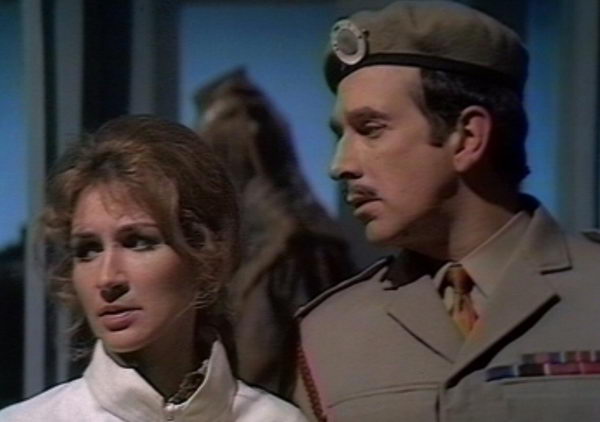
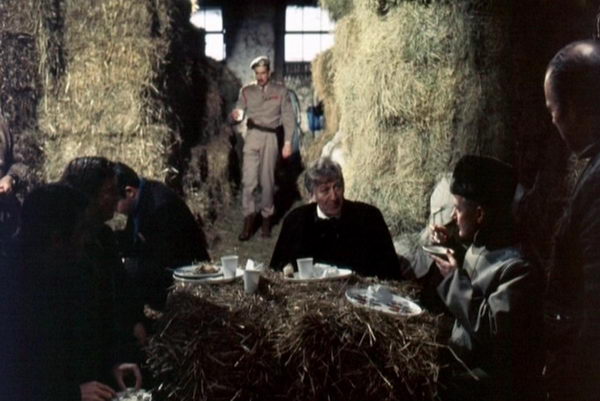
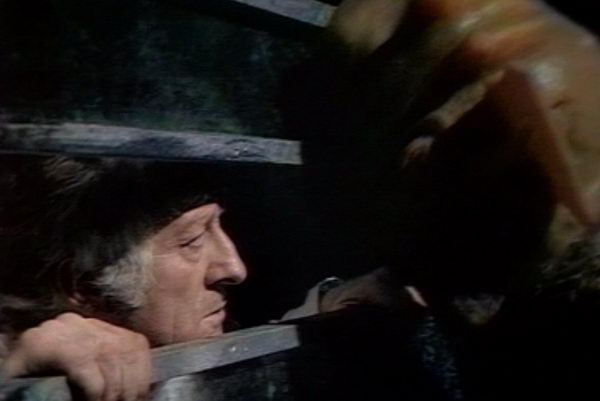
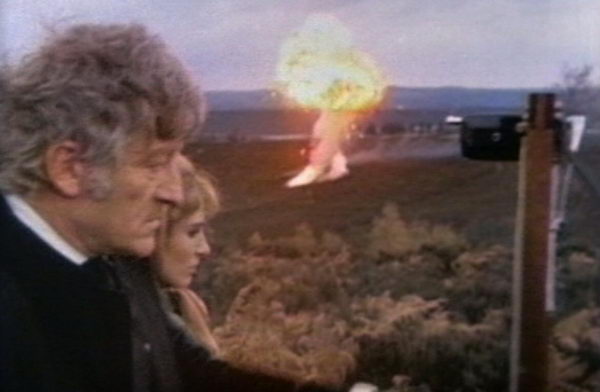
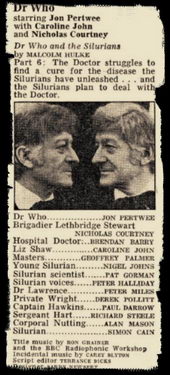
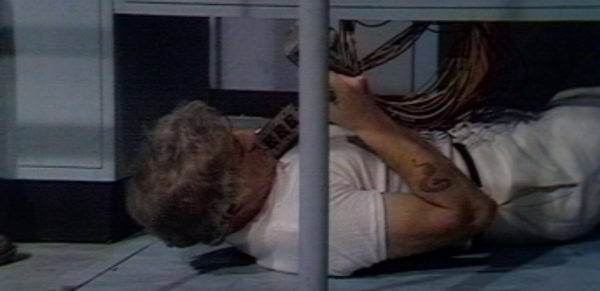
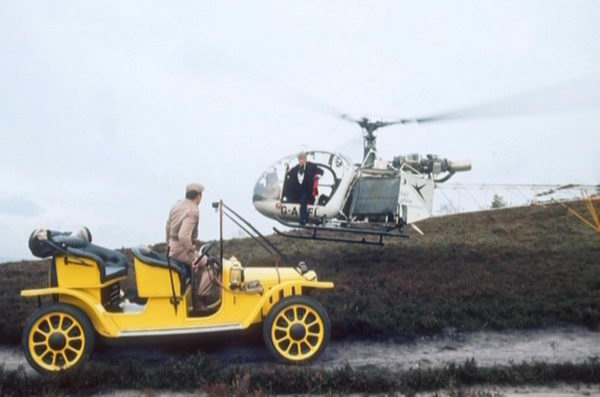
.jpg)
.jpg) It’s
seems strange, to begin with, that the serial
It’s
seems strange, to begin with, that the serial .jpg)
.gif) Such
a fine novel deserves an equally fine treatment
Such
a fine novel deserves an equally fine treatment